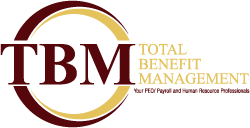- Total Benefit Management

NYS Minimum Wage Rates & Salary Thresholds Will Increase
December 11, 2018
8 Keys to Hiring the Right Team Members
December 18, 2018Looking for ways to engage your employees during the new year?
This article comes from Entrepreneur.
5 Ways Employee Engagement Makes Your Company More Competitive
Employee engagement is feeling connected to the job and the company, as well as having a sense of fulfillment and well-being in performing specific job duties.
It leads to several observable traits and behaviors:
- Fuller grasp of the company’s long-term goals and how their job functions fit into the whole.
- A personal belief in, and commitment to, the company and its mission.
- More harmonious and respectful relationships with coworkers.
- Continuing to stay on top of skills development as well as changes in the field or industry.
In short, exemplary employee engagement presents your company with a distinct set of advantages over the competition in the following five ways.
Your workers are more productive.
If you want greater productivity levels for your business, try working on increasing your employees’ levels of engagement in their jobs. Here are just a few actions that help build engagement:
- Give them challenging, fulfilling work.
- Share responsibility for decisions and outcomes.
- Demonstrate fairness.
- Provide training and opportunities for advancement.
When people are engaged, work feels lighter in every way. As a result, stress levels fall and people feel stronger and capable of more work.
To put it simply, when team members simultaneously experience decreased stress and higher energy levels, your company’s productivity rises.
Your customers are more satisfied.
High degrees of employee engagement also result in greatly enhanced customer loyalty. This leads to a greater number of repeat purchases and better word-of-mouth marketing, as compared to companies with lackluster engagement levels.
Your employees experience fewer safety failures.
Studies also suggest that engaged workers have far fewer safety violations or incidents. This results in decreased lost time, better and more consistent attendance, and decreased associated costs.
Your company has less turnover.
Engaged employees simply don’t have the desire to find a new job that disengaged workers do. When you’re able to retain your workforce for a longer period of time, they become more valuable.
With any wise investment, dividends grow larger over time as the value of the investment increases. It’s true of financial investments as well as human capital investments.
Your profits are bigger.
The end result of a highly engaged workforce is a much healthier bottom line. Improved productivity, reduced labor and safety costs, and a greater level of customer satisfaction cumulatively improve profit margins.
This means your company enjoys a healthy competitive advantage over companies in your field that don’t prize and prioritize employee engagement.
Click here to view the original article.

